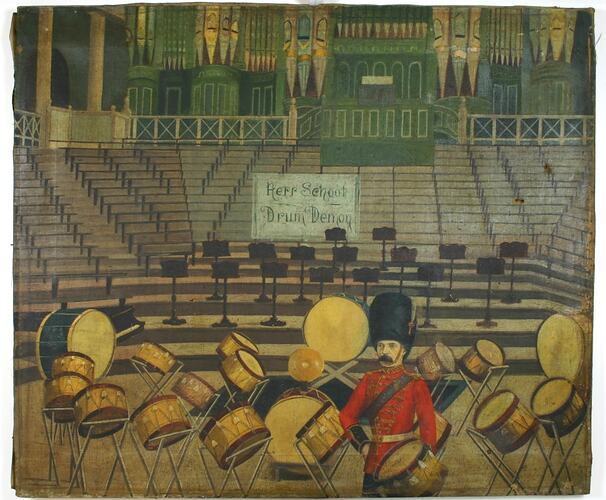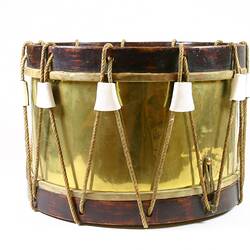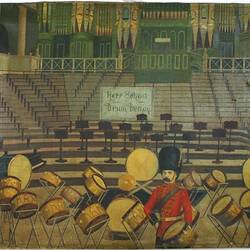The Melbourne Centennial International Exhibition opened on August 1, 1888; it received over two million visitors (MacDonald 2001, p. 42). Victorian and Australian technological, material, and industrial progress were all exhibited, however contemporaries favoured music and art as pastimes indicative of the highest stages of civilisation (MacDonald 2001, 42). The centrality of the orchestra to the Exhibition indicated to a world audience that Australia was capable of rising from its convict heritage to attain an artistic conviction equal to European cultural achievements (MacDonald 2001, p. 48). The Centennial Orchestra was especially convened for the Melbourne Centennial International Exhibition. It was described as 'the most complete instrumental organisation seen in this part of the world' at its premiere in 1888 (The Argus, 1888).
The Centennial Orchestra was led by Mr Frederick H. Cowen, a British Conductor who had accepted the 'very lucrative engagement' as Musical Director for the Centennial Exhibition (Ehrlich 1995, p. 149). Cowen was paid £5000 for the six month appointment (Colligan, p. 214). Cowen was contracted to bring about fifteen good instrumental musicians from England with him, to strengthen the orchestra and lead various sections (1890, p. 260). The Argus reports that the names of the musicians alone were indicative of 'the quality and function of the various instruments upon which they perform' (Argus, 1888). Tympani player Mr J. Munyard was engaged as a local musician (Argus, 1888).
The Argus wrote of the percussion section: 'the drums deserve to be spoken of by themselves on account of the important position they hold in all great instrumental organisations. First stand the kettle drums, consisting of vellum heads stretched over closed metallic vessels.the big drum, the grosse-caisse, with its thunderous boom, has its own effective part to play: but it is the kettledrums, with their accurate intonations, which are prized by the musician when aiming at orchestral effect' (Argus, 1888).
References
1890. The Official Catalogue of the Centennial International Exhibition Melbourne 1888-1889. Melbourne: Mason, Firth and M'Cutcheon.
The Argus. 1888. Exhibition Supplement, 2 August.
Colligan, Mimi. 1996. 'More Musical Entertainments' in Victorian Icon: The Royal Exhibition Building, ed. David Dunstan. Melbourne: The Exhibition Trustees.
Ehrlich, Cyril. 1995. First Philharmonic: A History of the Royal Philharmonic Society. Oxford: Oxford University Press.
MacDonald, Anna. 2001. Seeing Melbourne: The Centennial International Exhibition and the Cyclorama of Early Melbourne. Masters Thesis, University of Melbourne.
More Information
-
Keywords
-
Authors
-
Article types


